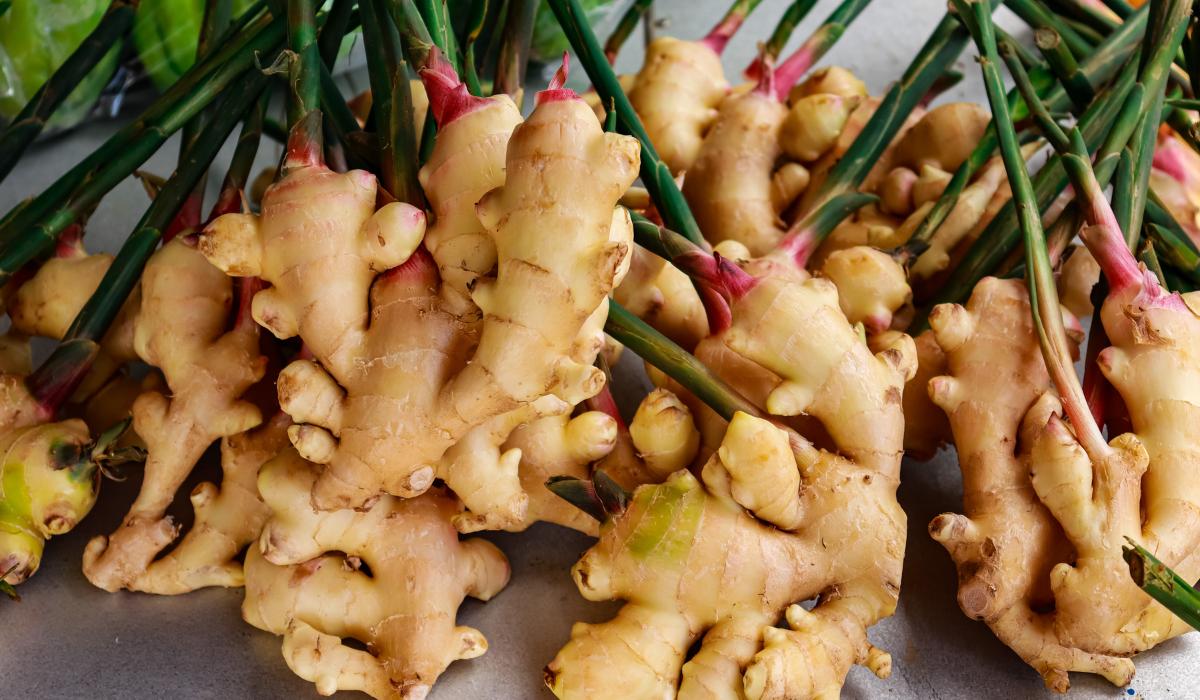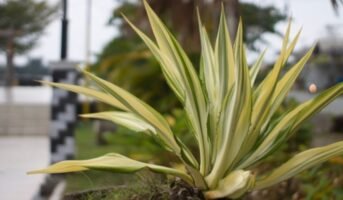Ginger, a spice and herb, is being used in households across the world for its culinary, as well as medicinal purposes. Used as a staple in most households, Ginger is a part of the Zingiberaceae family, which also includes turmeric and cardamom. Native to Southeast Asia, its root is used as a major spice for pungent flavour.

See also: Peppermint Plant: Facts, features, growth and care tips
Ginger: Main facts
| Common Name | Ginger |
| Botanical Name | Zingiber officinale |
| Flowering Months | October, November |
| Sowing | February, March |
| Flowers | Purple flowers |
| Cultivation | Southeast Asia |
| Plant Type | Perennial |
How to grow and take care of a Ginger plant?
Get the rhizomes: Buy the Ginger rhizomes, healthy ones with visible small buds.
Prepare the soil: Ginger thrives in loose, and well-drained soil. The soil pH should be slightly acidic to neutral (around 6.0 to 7.5).
Prepare the rhizomes: Before planting, soak the rhizomes overnight. Cut large rhizomes into small pieces, and make sure each piece has at least one bud.
Planting: Dig about two-four-inch-deep shallow trenches in soil. Place the rhizomes with buds facing upward and cover them with soil, ensuring they are about one-two inches below the surface. Space the rhizomes about eight-ten-inch apart.
Watering: Regular watering is important, especially during dry spells. Avoid overwatering to stop root rot.
Shade: Ginger prefers filtered sunlight or partial shade.
Maintain temperature and humidity: Ginger is a tropical plant and prefers warm temperatures between 75-85°F. Consider using mulch to retain moisture and regulate soil temperature.
Fertilization: A balanced organic fertilizer once a month will help its growth. You can also use compost or well-rotted manure to enrich the soil.
Ginger usage
Commonly used as an ingredient in Asian cuisines, Ginger is consumed in various forms, including fresh ginger root, dried ginger powder, ginger tea, ginger ale, and ginger candies. It is also used to make perfumes, soaps, and cosmetics due to its pleasant aroma.
Fresh Ginger can be used after mincing, grating, or slicing and adding it to your dishes. Dried ginger powder can be used as a spice in curries, soups, or baked items. Ginger can also be brewed into tea or used to infuse flavour in sauces, marinades, and dressings.
Ginger: Medicinal benefits
Ginger has antioxidant and anti-inflammatory properties that may have the potential to benefit cardiovascular health, brain function and reduce the risk of chronic diseases. It is commonly used to treat nausea and vomiting. It is also recommended for pregnant women, experiencing morning sickness or people undergoing chemotherapy.
FAQs
Is Ginger a root, or a stem?
Ginger is a rhizome, not a root. A rhizome is an underground stem.
Does Ginger have any side effects?
Some people may experience mild side effects, such as heartburn, stomach discomfort, or diarrhea, while consuming Ginger in large quantities. Ginger may also interfere with certain medications, including blood thinners, antiplatelet drugs, and medications for diabetes.
Is Ginger safe during pregnancy?
Yes, Ginger is safe for pregnant women. However, it must be consumed in moderate amounts.
Is Ginger good for digestion?
Ginger is traditionally used to help digestion.
| Got any questions or point of view on our article? We would love to hear from you. Write to our Editor-in-Chief Jhumur Ghosh at [email protected] |
Housing News Desk is the news desk of leading online real estate portal, Housing.com. Housing News Desk focuses on a variety of topics such as real estate laws, taxes, current news, property trends, home loans, rentals, décor, green homes, home improvement, etc. The main objective of the news desk, is to cover the real estate sector from the perspective of providing information that is useful to the end-user.
Facebook: https://www.facebook.com/housing.com/
Twitter: https://twitter.com/Housing
Email: [email protected]











